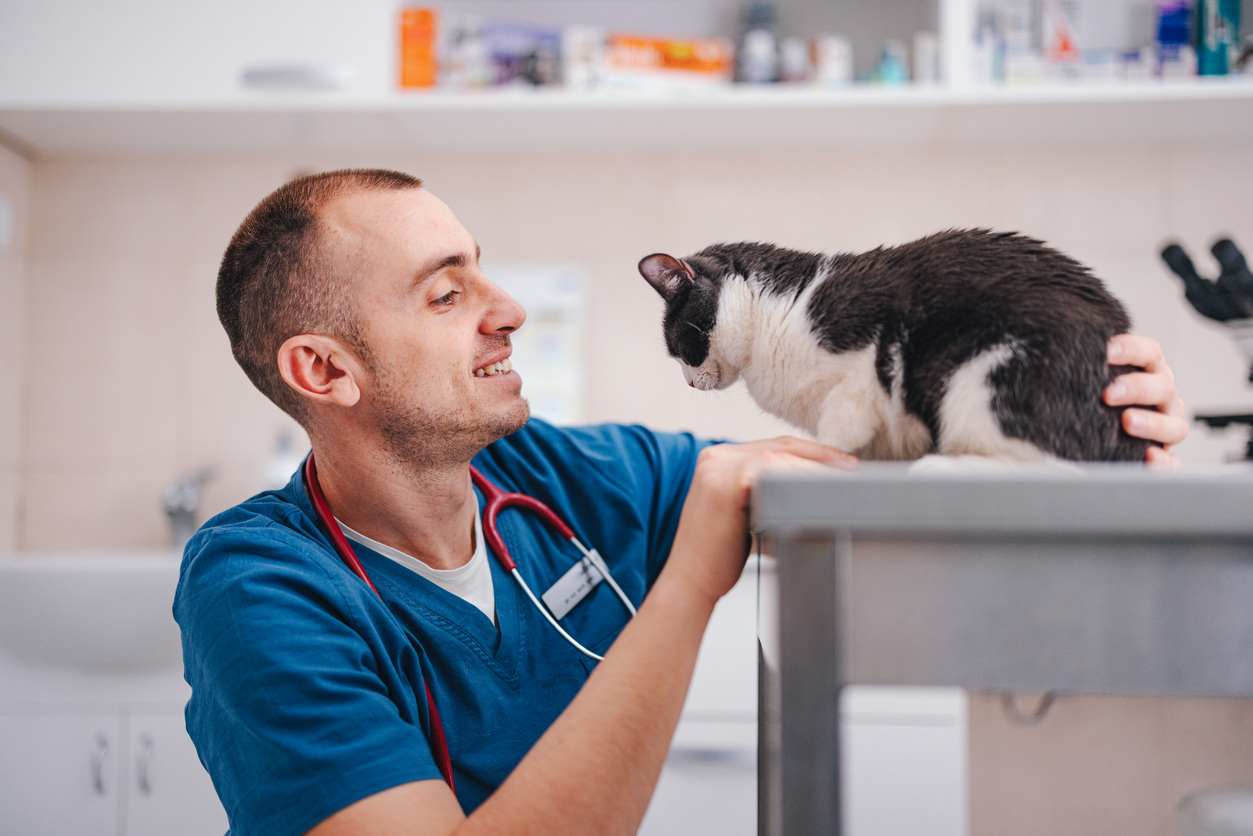The ongoing veterinary staff shortage has been well documented. So have the reasons behind it. One of the most cited factors is the emotional toll the job takes. Some animals, for example, just can’t be saved, and veterinarians have to witness the family’s grief.
But one of the worst – and less discussed – causes of emotional distress is what’s become known as “economic euthanasia”: when a pet could be saved but has to be euthanized because the family can’t afford the cost of testing and treatment. An article in The Guardian highlights the anguish veterinary staff feel in these situations:
“Oftentimes, because we have the option of euthanasia in veterinary medicine, people make life and death decisions based on finances, and that is a soul killer for veterinary professionals. Because we look at that and we say: ‘We can fix this. It’s fixable.’ But the people can’t pay to fix it.”
The pain is even worse when heartbroken families accuse the vet of being greedy or just in it for the money. The reality is that few practices have the financial flexibility to treat these pets free of charge, as much as they might want to.
But there is a solution. And since so few people take advantage of it currently, veterinary staff have the ability to make a huge impact just by spreading the word.
The solution? Pet insurance.
The majority of pet owners don’t insure their pets, which means there’s a lot of room to get more on board. And the more people who insure their pets, the less likely veterinary staff are to find themselves having to deal with “economic euthanasia.”
Before discussing ways veterinary staff members can encourage their clients to purchase pet insurance, it’s helpful to take a look at market penetration rates, which are markedly lower in the US.
The state of pet insurance in the US, the UK, and the EU
Market penetration for pet insurance in the US is incredibly low, at only 3% (despite the fact that just over half of Americans don’t have enough money saved to cover a $1,000 emergency). Rates are much higher in the UK and EU – from as high as 25% in the UK to around 50% in Sweden.
The key takeaway is that, even in countries like Sweden, where about half of the people who own pets have pet insurance, there's still a lot of room for improvement. Veterinary schools in the EU are taking the lead by teaching their students to recommend pet insurance as the default, and most clinics ask for it when clients bring their pets in. Conversely, many Americans don't even know pet insurance exists.
The way forward: Educating clients about the benefits of pet insurance
Both veterinary and insurance professionals agree that client education is the best driver of growth. In fact, a 2016 survey conducted by the North American Pet Health Insurance Association (NAPHIA) revealed that more than half of pet owners would buy insurance if their vets recommended it. And, in 2019, the American Veterinary Medical Association (AVMA) began encouraging members to discuss pet insurance with their clients.
For veterinarians who may feel uncomfortable bringing up the topic of pet insurance, take a look at the benefits:
Lower rates of "economic euthanasia"
Having to euthanize pets that could be saved is a main driver of emotional trauma for veterinary professionals. The more people who buy pet insurance, the fewer instances of economic euthanasia that veterinarians will have to face.
Lower rates of pet parents having to make heart-wrenching choices
Veterinarians aren’t the only ones traumatized by economic euthanasia. More insured pets means fewer pet parents having to decide between euthanizing their pet or taking on debt they can’t afford. Even if they truly have no choice, they still experience guilt and grief.
Better outcomes for pets
Economic concerns don’t just come into play during emergencies. Financial constraints prevent some clients from bringing their pets in for wellness checks, vaccines, etc. These pets are more prone to suffer from infectious diseases as well as from preventable conditions like periodontal disease or heartworms.
Increased revenue
While some veterinarians may worry that accepting pet insurance will have a negative impact on their finances, the opposite is true. Currently, roughly 30% of pet owners don’t visit their vet at least once a year, primarily for financial reasons. Considered in conjunction with the average cost of a veterinary visit, that’s roughly $7 billion of lost revenue per year. Pet parents with insurance visit the vet more often and spend more per visit, especially toward the end of a pet’s life.
It’s clear that educating clients benefits the clients, their pets, veterinary staff, and veterinary practices as a whole.
A roadmap for educating your clients about pet insurance
To successfully educate all of your clients, you need a consistent, carefully planned approach. Fortunately, Practice Management Software (PIMS) in conjunction with custom templates and third-party integrations, makes it easy. It may take a little effort to set things up, but once that’s done, you just follow the plan.
Here are a few examples of how you can use your PIMS to make it easy for various staff members to make talking about pet insurance part of the daily workflow:
Receptionists
In addition to answering client phone calls, your receptionist is often the first and last person your clients interact with in the clinic. That gives them some unique opportunities:
- When a client brings a new puppy or kitten in for their first visit, that’s the perfect time to start the conversation about pet insurance. When you create a template in your PIMS for a new pet intake, include a prompt to ask the new pet parent whether they’ve purchased pet insurance. If they have, the receptionist can enter that information into the patient record. If they haven’t, the receptionist can offer a short explanation of why pet insurance is so important, print out a document explaining the general benefits of pet insurance (so they can read it while they wait!), and tell them the vet will talk to them about it during the visit.
- When the new client checks out, the receptionist can use the PIMS to print out not only a guide for how to care for their new family member, but a more detailed explanation of pet insurance as well as guidelines for how to choose a plan that’s a good fit for their pet and their finances.
- If the new client gives your clinic permission to contact them via text or email (in accordance with privacy laws in your country or state), your receptionist can send follow-up notes with links to resources like the following:
A growing number of employers offer pet insurance. Tell your clients to find out if theirs is on the list!
Veterinary technicians
When your vet tech checks the new patient in and performs preliminary tasks like weight, stool sample, etc., they can operate off a checklist that, in addition to making sure they do everything necessary before you come in, reminds them to talk about pet insurance. This is an especially good time to share any personal experiences of times they were glad they had pet insurance (or wished they had it).
Veterinarians
You can also create your own checklists to work from, including a more thorough explanation of pet insurance and how to navigate the decision process of choosing a plan. This is the time to talk about the difference between plans that cover wellness checks, preventive care, and prescriptions versus plans that only cover treatment for accidents.
It’s also a good time to talk about “pre-existing conditions” – some health plans may cover surgery the first time a pet swallows a sock but deem it a pre-existing condition if it happens again! There are also breed-specific issues (congenital, behavioral, etc.) that new pet parents need to know about when shopping for pet insurance.
How to use templates to remind client about pet insurance options
One of the great things about a customizable PIMS is that you can create templates to automatically include information about pet insurance into all content you provide your clients:
- Set up your invoicing so that, at the bottom of each invoice, there’s a message that says, “This is approximately how much you could have saved if you had pet insurance.”
- Whenever possible, partner with pet insurers that will allow you to invoice them directly, instead of the client having to pay up front and wait to be reimbursed. But if you can’t do that, add information to invoices offering guidance on how to get reimbursed.
- Integrate your PIMS with your customer-facing website so that clients can access information when they need it. Include links to guides on choosing pet insurance as well to insurers you trust through personal experience.


